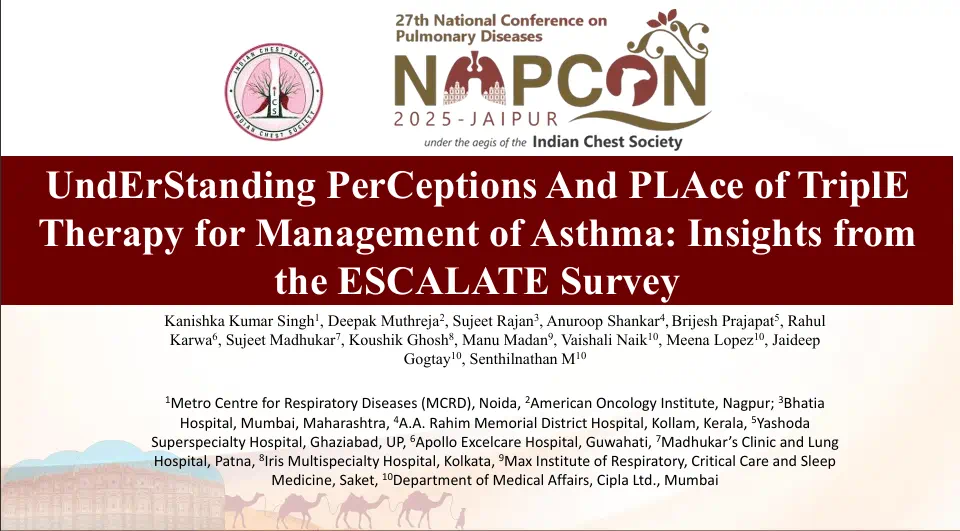ATS 2023: Efficacy of As-needed Use of Albuterol-Budesonide in Patients with Moderate-to-Severe Asthma Who Are Adherent to Maintenance Therapy
Rationale: Short-acting β2-agonists (SABA) provide rapid relief from bronchoconstriction but fail to address the underlying airway inflammation associated with asthma symptoms, leaving patients vulnerable to exacerbations. To address this limitation, a fixed-dose combination of albuterol and budesonide was developed as rescue therapy that offers immediate bronchodilation along with anti-inflammatory effects. The MANDALA study (NCT03769090) demonstrated that as-needed albuterol-budesonide, at doses of 180/160 μg and 180/80 μg, significantly reduced the risk of severe exacerbations by 27% and 17%, respectively, compared to albuterol alone in patients with moderate-to-severe asthma who were receiving inhaled corticosteroid (ICS)-based maintenance therapy. This approach of using as-needed albuterol-budesonide to manage increasing inflammation during symptomatic episodes may be particularly beneficial for patients with suboptimal adherence to maintenance therapy. In this analysis, we specifically examine the impact of albuterol-budesonide on the risk of severe exacerbation in patients who maintain adherence to maintenance therapy.
Methods: The MANDALA study enrolled symptomatic patients aged ≥4 years who had experienced at least one severe exacerbation within the past 12 months and were receiving ICS-containing maintenance therapy for moderate-to-severe asthma. Patients aged ≥12 years were randomly assigned in a 1:1:1 ratio to receive either as-needed albuterol-budesonide at doses of 180/160 μg (n=1,013) or 180/80 μg (n=1,013), or albuterol alone at a dose of 180 μg (n=1,014). Patients completed a minimum of 24 weeks of randomized treatment while continuing their regular ICS-based maintenance therapy. Adherence to maintenance therapy was calculated based on the percentage of days that patients reported taking their maintenance therapy through entries in eDiary. A pre-specified analysis focuses on the time-to-first severe exacerbation, which followed patients aged ≥12 years until their average adherence to maintenance therapy over a 3-week period fell below 70%. Patients included in the analysis were those whose mean adherence to maintenance therapy in the 10 days before randomization was ≥70%. All data collected prior to discontinuation of randomized treatment, change in maintenance therapy, or a decline in 3-weekly maintenance therapy adherence below 70% were considered in the analysis.
Results: In the analysis, a total of 2,590 patients were included (albuterol-budesonide 180/160 μg, n=880; albuterol-budesonide 180/80 μg, n=850; albuterol, n=860). The results showed that the use of albuterol-budesonide at doses of 180/160 μg led to a 23% reduction in the risk of severe exacerbation (HR 0.77; 95% CI 0.61-0.97; p=0.029), while albuterol-budesonide at doses of 180/80 μg resulted in a 22% reduction (HR 0.78; 95% CI 0.62-0.99; p=0.037), compared to albuterol, among patients who maintained adherence to their maintenance therapy.
Conclusions: The findings indicate that as-needed albuterol-budesonide offers a clinically significant decrease in the risk of severe exacerbations among patients who maintained their adherence to their maintenance therapy after randomization, in comparison to using albuterol alone. This suggests that even when patients receive consistent ICS therapy, there exists a window of opportunity to intervene during periods of rising inflammation and prevent exacerbations by simultaneously treating symptoms with albuterol and budesonide.
American Thoracic Society (ATS) 2023 International Conference, 19th May - 24th May 2023, Washington DC.



